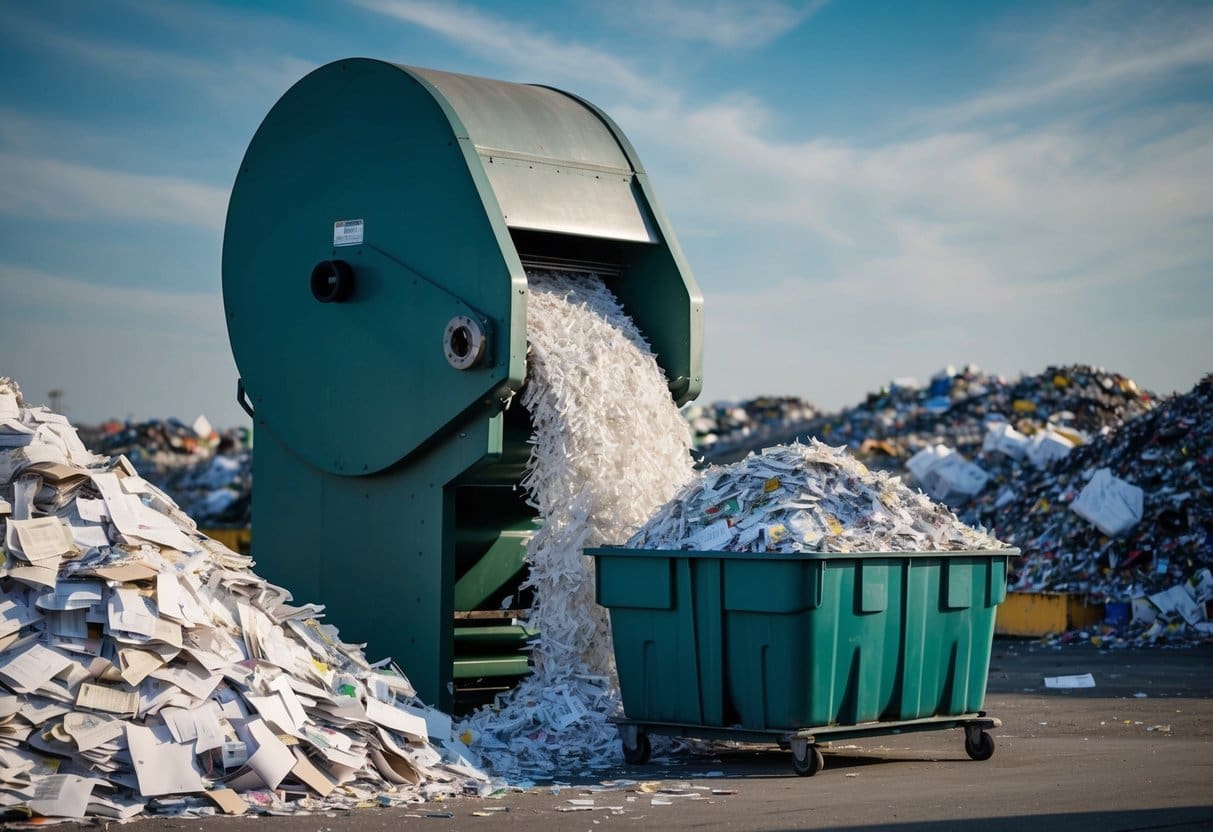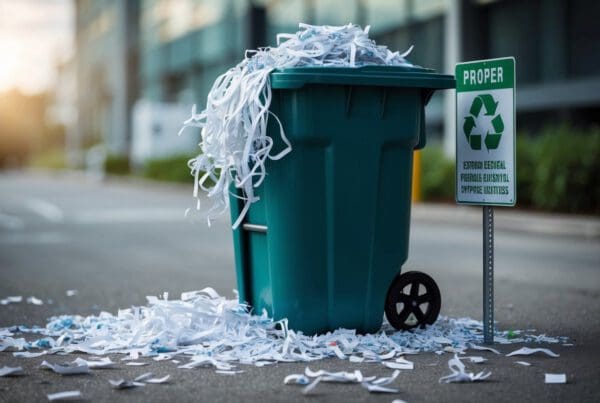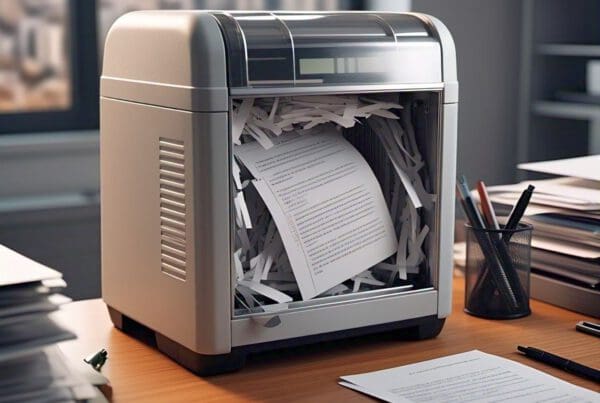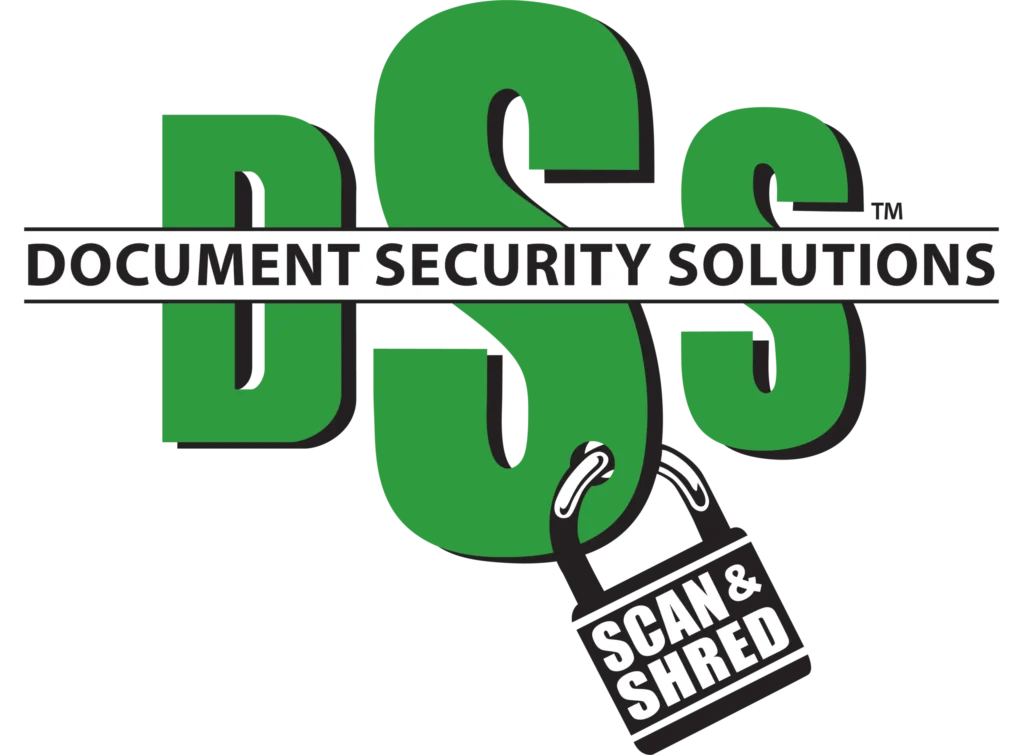The Role of Paper Shredding in Waste Management

We often face challenges in managing paper waste effectively to reduce its impact on landfills. Paper shredding can play an integral role in sustainable waste practices, offering secure and efficient disposal methods.
Comparative Analysis of Shredding and Traditional Disposal Methods
Traditional paper disposal typically involves simple recycling or landfill dumping. However, shredded paper has distinct advantages. Shredding helps enhance security by preventing sensitive information from being easily accessed during document disposal. Unlike intact paper, shredded paper can be compacted more efficiently, reducing space in landfills.
The process of shredding can also make it easier for recycling facilities to process paper, as shredded paper breaks down quicker than whole sheets. This results in a more expedited recycling process and a broader waste management strategy.
Advantages of Professional Shredding Services
Professional shredding services offer a secure document destruction method that is convenient and efficient. These services often include on-site shredding, where shredding is done at the client’s location, ensuring secure handling of sensitive data.
Outsourcing to professional shredders means using their expertise in sustainable practices and their advanced equipment for optimal shredding solutions. Utilizing these services can ensure our shredded paper is recycled effectively, minimizing solid waste and lessening our environmental footprint.
Environmental Impact of Paper Waste

Reducing paper waste proves crucial for cutting down emissions and saving trees. By recycling and employing eco-friendly practices, we can lessen harmful effects on ecosystems.
Assessing the Carbon Footprint of Paper Production and Disposal
The carbon footprint of paper begins with production. Trees are cut down, and the process emits carbon dioxide and other greenhouse gases. When we make paper, energy-hungry machines contribute to air pollution. The use of energy-efficient equipment can reduce these emissions.
At the disposal stage, paper waste in landfills produces methane, a potent greenhouse gas. Recycling can reduce this problem. Recycled paper needs less energy to produce than new paper, meaning lower emissions. By supporting recycling, we can lower our carbon footprint.
Ecosystem Consequences and the Push for Environmental Sustainability
Deforestation takes a toll on our environment, harming ecosystems by reducing biodiversity. Trees absorb carbon dioxide, so taking them away contributes to increased greenhouse gases. Keeping forests intact helps with environmental protection.
We should focus on sustainable practices to conserve natural habitats. Companies promoting corporate sustainability initiatives often invest in reducing paper consumption. They focus on recycling and using environmentally friendly materials.
Embracing sustainability not only protects ecosystems but also supports our efforts in decreasing air and methane pollution. Following corporate social responsibility standards strengthens our commitment to a greener future.
Integrating Shredding within Recycling Efforts

Integrating paper shredding into recycling programs is essential for enhancing sustainability. It addresses document security and energy consumption while optimizing recycling rates.
Challenges of Recycling Shredded Paper
When we talk about recycling shredded paper, one major issue is its small size. Recycling facilities often struggle to handle it efficiently. Shredded paper can cause problems in the sorting machines, leading to increased costs and time.
Moreover, these tiny pieces can get mixed with other materials, reducing the quality of recycled paper products. It also requires careful handling to ensure that sensitive information does not end up in the wrong hands. This is vital for protecting identity and maintaining trust.
Additionally, energy consumption becomes a concern. Processing shredded paper demands more energy than whole paper sheets. This increases the overall energy footprint, demanding improved techniques to minimize the impact on sustainability.
Maximizing the Benefits of Paper Recycling Programs
To make the most out of our recycling efforts, we need a strong commitment to sustainability. Recycling programs must include specific guidelines for collecting and processing shredded paper. These guidelines help ensure efficient operation and resource-saving practices.
Exploring new techniques like composting can offer alternatives to traditional recycling. Shredded paper, when mixed with organic waste, can enhance composting programs, turning waste into valuable resources.
Emphasizing the circular economy is crucial. By using recycled paper products, we close the loop and reduce the demand for new materials. Educational campaigns can raise awareness about proper disposal, increasing recycling rates and supporting a healthier planet.
In our journey toward a sustainable future, integrating shredding processes with recycling programs can make a real difference. Let’s focus on innovations and collaborations to improve both security and environmental impact.
Shredding Services and Legal Compliance
Our business landscape demands secure document destruction to protect sensitive information and ensure we meet legal standards. Managing these aspects addresses risks like identity theft and fines for non-compliance.
Protecting Sensitive Information through Secure Document Disposal
Using shredding services helps us secure our sensitive documents. These services specialize in the safe and complete destruction of personal data. By hiring experts, we reduce the risk of identity theft. Secure document destruction is vital for preventing unauthorized access to confidential information.
Shredding services offer different levels of security. We should choose one that fits our needs. They use advanced shredders that cut paper into pieces as small as confetti. This ensures documents are unreadable after shredding. Onsite and offsite options are available to match our business constraints and security needs.
Navigating Compliance with Regulations
Compliance with regulations is crucial when disposing of documents. Laws like the Health Insurance Portability and Accountability Act (HIPAA) and the Fair and Accurate Credit Transactions Act (FACTA) set strict rules on document shredding. We must follow these guidelines to avoid legal issues and fines.
Shredding services help us meet these requirements by providing certificates of destruction. These certificates prove we disposed of the documents properly. Regular training workshops keep us updated with changing regulations. It’s essential we stay informed and compliant to protect both our business and our clients’ sensitive information.
Innovative Approaches to Shredding and Sustainability
As we look at shredding and sustainability, our focus is on energy-efficient shredding equipment and eco-friendly shredding practices. These strategies help save energy, reduce waste, and protect our natural resources.
Energy Savings and the Use of Energy-Efficient Shredding Equipment
We know that energy consumption is a significant concern in shredding. Using energy-efficient shredders can greatly cut down on the power used in this process. These machines are designed to use less electricity while still being efficient.
Some models even have automatic shut-off features when not in use, saving even more energy. The goal is to align shredding with sustainability by reducing the energy impact. By doing so, we also lower costs and protect the environment.
Using less energy also means fewer emissions from electricity generation. This has direct environmental benefits as it helps us lower our carbon footprint. Implementing these machines in recycling facilities can contribute to responsible waste management and a sustainable future.
Fostering a Sustainable Future with Eco-Friendly Shredding Practices
In our efforts to promote sustainable practices, we should look beyond just using efficient machines. Eco-friendly practices in shredding include recycling the waste material. This minimizes solid waste in landfills, preserving natural resources.
Water usage can also be reduced by using dry shredding methods. Additionally, recycling facilities should sort shredded paper for reuse in manufacturing, which reduces the need for raw materials.
Engaging communities in responsible waste management education can also foster a sustainable future. By understanding the impact of shredding on the environment, we can make better choices. Our collaborative actions lead to a more sustainable world.





